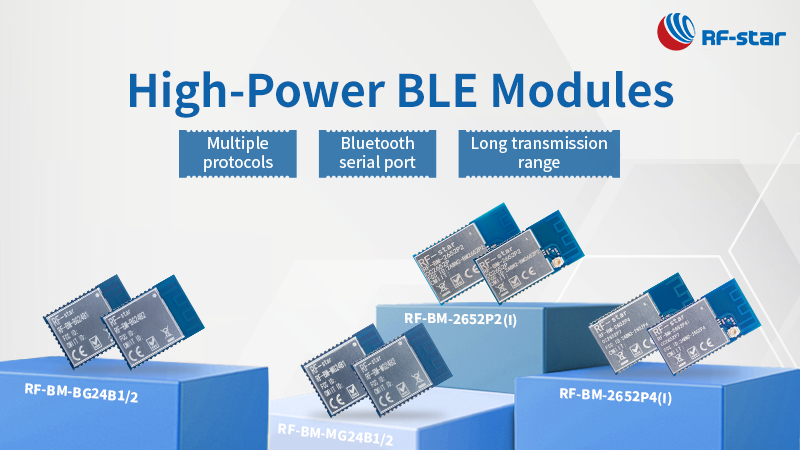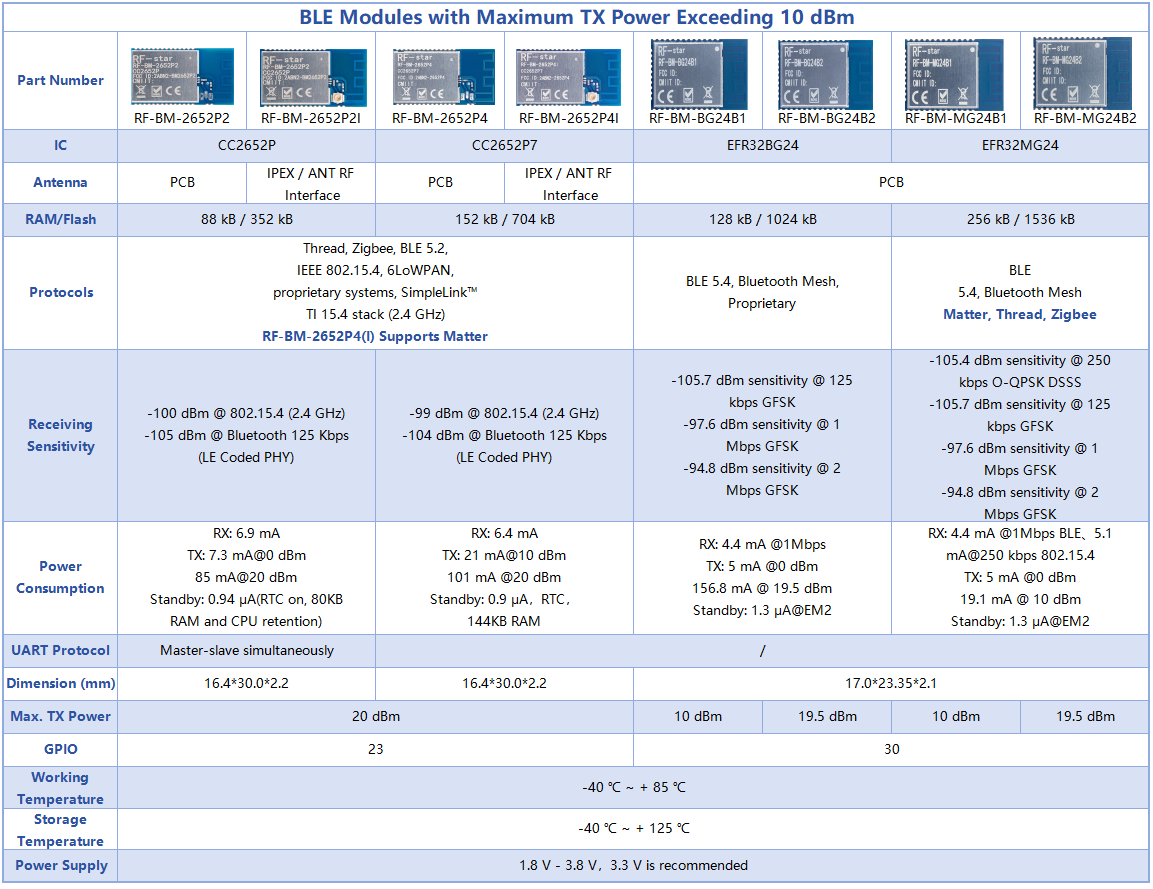In today's rapidly evolving wireless communication landscape, Bluetooth technology shines with its low power consumption and ease of use in short-range wireless communication. As new applications such as smart home and Industry 4.0 emerge, these smart devices urgently cover long-range distance and get stable connectivity through BLE radios. To meet the needs of wireless communication over a wider range, BLE devices with a high transmit output power came into being.
Various regulatory agencies limit the transmit power of BLE radio devices. Typically, in all standards, the maximum transmit power for 2.4 GHz band devices is around 100 mW (20 dBm).
The max. transmit power of BLE radios available today usually ranges between 0 dBm to around 20 dBm, expanding transmission distances from 10 meters to hundreds of meters. Obviously, the BLE radio devices with high TX power draw a lot of attraction and are favored by the following applications:

While these applications prioritize transmission power and range, higher transmit power also leads to increased power consumption. Therefore, when selecting Bluetooth Low Energy modules for different applications, it's essential to consider factors such as transmission power, communication range, antenna, and power consumption.
Most of BLE modules have a maximum TX power of 4 dBm or 8 dBm, but a few exceed this. As an example, RF-star’s CC2652P, CC2652P7 series modules can output +20 dBm, while EFR32BG24/MG24 modules can output +19.5 dBm.

RF-BM-2652P2 and RF-BM-2652P2I wireless modules are based on the Texas Instruments (TI) CC2652P SoCs with a built-in PA and maximum transmit power of +20 dBm. In addition, the modules also integrate a low-noise amplifier (LNA) to effectively improve the Bluetooth receiving sensitivity.
Importantly, the modules also support multiple protocols like Bluetooth 5.2 Low Energy, Thread, Zigbee®, IEEE802.15.4g, 6LoWPAN, and TI 15.4-Stack (2.4 GHz), running simultaneously through the dynamic multi-protocol manager (DMM). Thanks to these features, the wireless modules have been widely used in smart homes, gateways, and long-distance sensors.
Another good news is that RF-star has released a Bluetooth UART transparent transmission version for the modules. Rich AT commands allow customers to quickly shorten the product development lifetime, like:
Advanced CC2652P7-based BLE modules (RF-BM-2652P4 and RF-BM-2652P4I) also offer +20 dBm transmit output power.
Aside from supporting the above-mentioned ZigBee and other 2.4 GHz wireless technology, they can run Matter protocol. More tellingly, the large memory of 152 kB RAM and 704 kB Flash of these CC2652P7 modules allows them to be embedded in more complex applications.
RF-BM-BG24B1 and RF-BM-BG24B2 modules support BLE5.4, Bluetooth mesh, and proprietary protocols, while RF-BM-MG24B1 and RF-BM-MG24B2 modules also support Matter, Zigbee, OpenThread, and more.
The EFR32MG24 wireless modules with 1536 kB Flash and 256 kB RAM provide enough space for future application growth.
This series of BLE modules are all designed as PCB onboard antennas with a maximum TX power of +19.5 dBm. They are often used in smart home devices such as gateways/hubs, sensors, switches, door locks, smart plugs, LED lighting, lamps, and medical devices like blood glucose meters and pulse oximeters.
For detailed parameters, please refer to this table.

To sum up, these BLE modules not only feature high transmit power, but also advanced wireless technologies and flexible output options including PCB antenna, external IPEX connector and half-hole RF out interface. They are powerful wireless communication solutions for smart homes, industrial automation, and more.
For more information on high-power BLE modules, visit www.rfstariot.com or reach out at info@szrfstar.com.